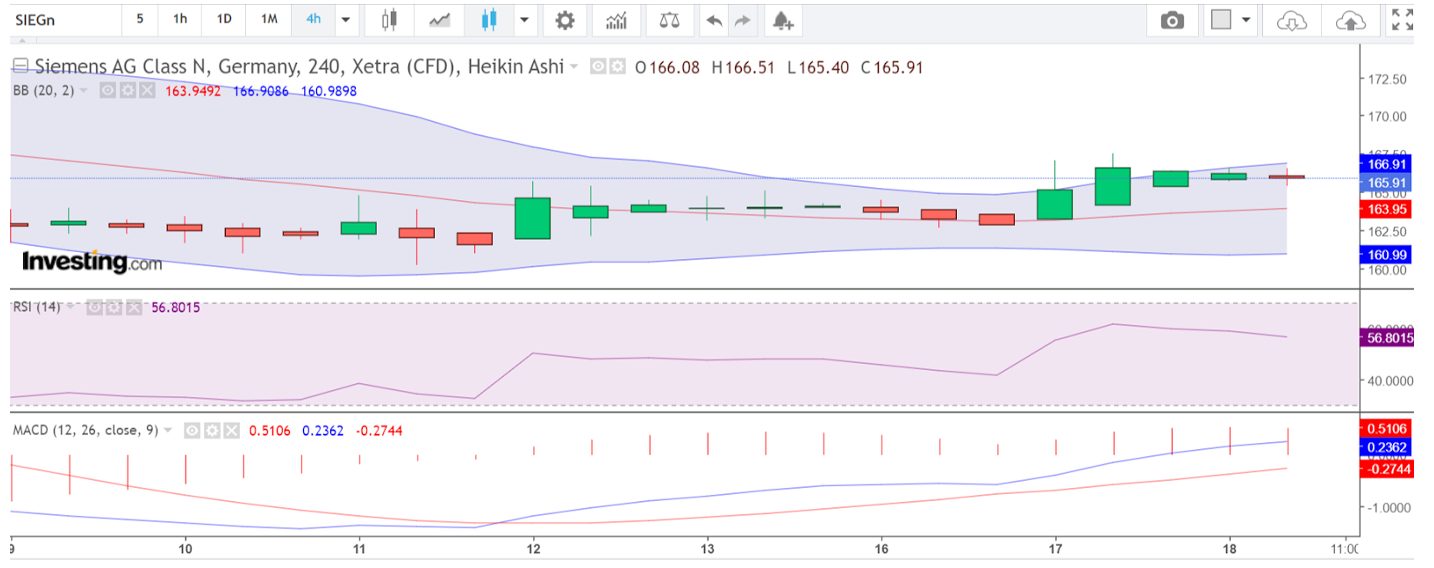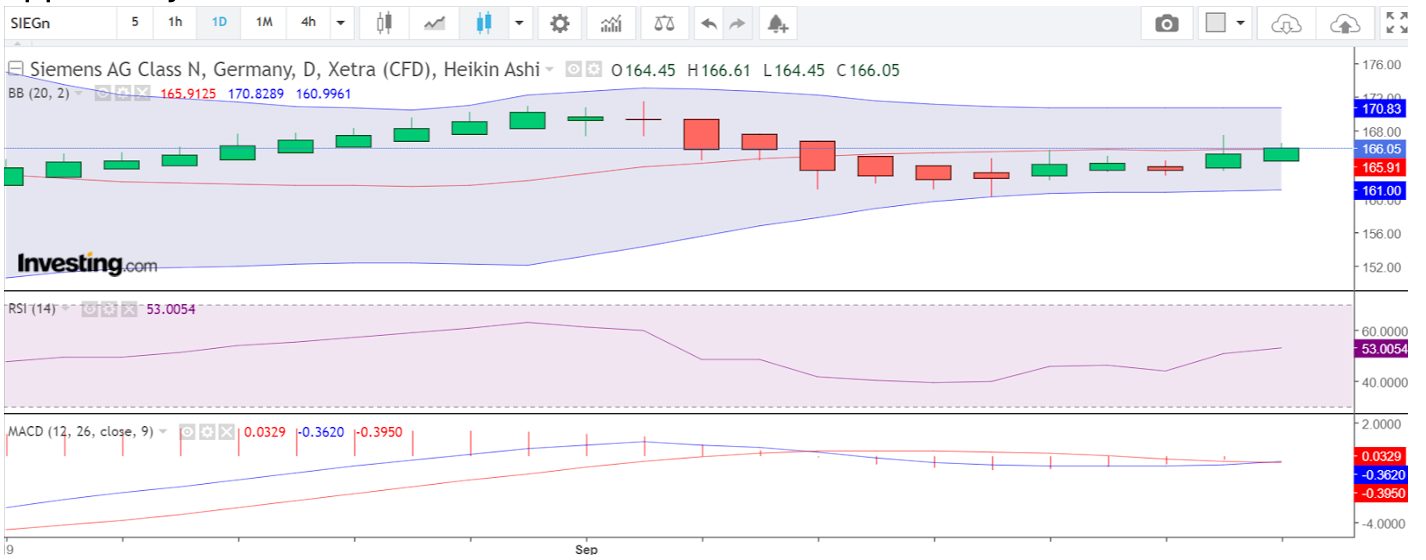CFD Trading in Germany



Contracts for difference (CFDs) give traders the ability to profit from rising or falling financial markets by taking long or short positions. They are generally traded with low investments, making them accessible to active traders.
CFDs were introduced for retail investors in Germany in 2005 and exploded in 2007 following MiFID, which harmonized financial regulations across the EU, making it easier for providers to offer CFDs.
This guide to CFD trading in Germany covers their mechanics, opportunities, risks, and examples for beginners.
Quick Introduction
- CFDs are high-risk derivatives that allow you to speculate on the price movements of financial instruments without owning the underlying asset. You enter a contract with a broker to exchange the difference in price between the opening and closing of a trade.
- CFDs can be traded on various markets, including stocks (German shares like BMW), indices (Germany’s DAX 40 or global indices like S&P 500), forex (currency pairs like EUR/USD), commodities (such as natural gas), and increasingly cryptocurrencies (like Bitcoin).
- Economic news releases affect the best time to trade CFDs, and major news releases increase volatility, offering day traders opportunities. European economic news is released between 8:00 AM and 11:00 AM CET. Reports on GDP, inflation, and employment data from Germany and the Eurozone are published.
- CFD trading in Germany is regulated by the Federal Financial Supervisory Authority (BaFin) (BaFin), which ensures providers follow guidelines to protect retail traders, including limiting leverage trading to 1:30 and ensuring risk disclosure.
Best CFD Brokers in Germany
After years evaluating hundreds of CFD platforms, these 4 offer the best trading conditions for German traders:
How CFD Trading Works
Let’s say you want to speculate on the short-term price movement of copper, given its essential role in renewable energy technologies and electric vehicles, sectors that are growing in Germany.
Copper is priced at €8,000 per metric ton. You believe that the price of copper will rise due to increased demand from the manufacturing and construction sectors, so you open a long position with a CFD.
Using leverage of 1:10, you only need to deposit 10% of the trade value as margin. If you decide to buy 2 metric tons, the total trade value is €16,000 (€8,000 x 2 metric tons), but with leverage, you only need €1,600.
If copper’s price increases to €8,500 per metric ton, and you close the position, the price difference is €500 per metric ton, giving you a profit of €1,000 (€500 x 2 metric tons), minus any fees. However, if the price drops to €7,500 instead, your loss would also be €1,000.
Given the risk of substantial losses dealing CFDs, I suggest utilizing risk management tools like stop-loss orders to automatically close positions if the price moves against you, helping to limit potential losses.You can also automatically set take-profit orders to close positions when the asset reaches a desired price.
Is CFD Trading Legal In Germany?
CFD trading is legal in Germany and regulated by BaFin, a ‘green tier’ body in DayTrading.com’s Regulation & Trust Rating, which ensures that it’s conducted fairly and transparently and focuses on protecting retail investors from excessive risks.
CFD brokers operating in Germany must be authorized by BaFin or other European financial regulators (under the MiFID II directive) and comply with strict transparency, investor protection, leverage restrictions, and risk disclosure rules.
BaFin imposes restrictions on leverage to protect retail traders from excessive risk.
- 1:30 for major forex pairs (such as EUR/USD)
- 1:20 for other currency pairs (such as EUR/GBP) major indices (such as the DAX 40) and gold
- 1:10 for commodities other than gold (such as oil) and non-major indices (such as the Russell 2000)
- 1:5 for individual shares (such as stocks from Deutsche Boerse)
BaFin mandates that brokers offer negative balance protection, meaning you can’t lose more than your initial investment, protecting you from owing your broker additional capital.
Firms must also provide clear risk warnings to clients, particularly emphasizing the high-risk nature of CFDs.
Is CFD Trading Taxed In Germany?
Profits from CFD trading in Germany are generally subject to capital gains tax, applied at a flat rate of 25%.
Additional charges, such as a Solidarity Surcharge, a 5.5% surcharge is added to the capital gains tax, bringing the effective tax rate to 26.375%.
Depending on the federal state, an additional church tax may apply, raising the total tax burden to around 27-28%.
Losses from CFD trading can be deducted from profits made from other capital gains in the same year, allowing German traders to reduce their tax liability if they experience losses. If losses exceed gains in a year, they can be carried forward against future profits.
Some German-based brokers automatically withhold capital gains tax on your behalf. You receive your profits with taxes already deducted, making it easier to manage tax obligations.
If you use a provider outside Germany, you are liable for capital gains tax and must declare your profits when filing your annual tax return. You report your CFD profits on Schedule KAP (Anlage KAP) of your income tax return.
Germany offers a tax-free allowance on capital gains, including CFD trading profits:
- €1,000 for individuals
- €2,000 for married couples jointly
A CFD Trade
To show you how CFD trading in Germany works in practice, let me walk you through a trade…
Background
Germany’s trading exchanges contain many globally recognized brands like VAG Group, BMW, BASF, etc. For this example trade, I’m concentrating on Siemens AG, a German multinational technology conglomerate. It’s focused on industrial automation, distributed energy resources, rail transport and health technology.
I’m trading the stock as a CFD. I often search for undervalued firms (from a swing or day trading perspective). Siemens fits my criteria.
Its share price of €162 appeared to be temporarily depressed; the year’s price range was €119 – €188. Siemens’s market capitalization was €140bn, and its P/E ratio 16.32. Siemens news had been highly positive lately, and many leading analysts recommend the stock as a buy or hold.
When day trading or swing trading, I prefer to use two timeframes: one lower, like the 4-hour (4H), and one higher, like the daily (D1).This allows me to view how the trading sessions develop during the day while monitoring the medium-term outlook.
I avoid cluttering my charts with too many technical indicators. I concentrate on simple tools I’ve trusted to generate positive results. Avoid duplicating your charts with information; try to select one each of these four types:
- A trend-following tool
- A trend-confirmation tool
- An overbought/oversold tool
- A profit-taking tool
The most straightforward trend-following tool is the moving average (MA). Moving averages are contained in the moving average crossover divergence (MACD), which has the added value of being a trend confirmation tool, given that it has two MAs and a histogram as visual prompts.
The relative strength index (RSI) is the perfect overbought and oversold tool and has the benefit of illustrating volatility. Bollinger Bands can serve as a profit-taking tool.
With just three technical indicators added to the use of Heikin Ashi smoothed candlestick patterns to determine price action, we should, in theory, have our bases covered from a technical analysis viewpoint.
That said, it’s essential to recognize that no trading method or system is infallible when using indicators.
4HR Timeframe

The 4HR TF above shows the following information: the closed bar HA candlestick formation indicated a change in market sentiment and momentum.
The RSI confirmed these market conditions, indicating volatility as it breached the median 50 line but remained short of the 70 overbought line. The MACD histogram was bullish, while the moving averages widened further.
The Bollinger Bands also indicated the trend continuation as the price remained above the 20 EMA and the bands widened. The bands tend to widen when the price becomes volatile and contract when the price becomes more stable.
Many short-term traders see stock CFDs as overbought as their price nears the upper band and oversold as they approach the lower band, signalling an opportunity to trade.

Daily Timeframe
The indicators are bullish. The HA candles are closed and making higher highs, the BB’s 20 EMA is being challenged, the RSI reading has breached the media 50 level, the MAs on the MACD have crossed, and the histogram is bullish.
My deal ticket had a buy entry order at 163.24, a stop loss order at 162.01, and a take profit order at 168.5.
If the profit limit wasn’t hit, I was prepared to hold the trade over to the next day’s session.
Bottom Line
CFD trading in Germany offers opportunities across many asset classes, sectors and geographies, from domestic, regional across Europe, and further afield.
Trade CFDs during high market liquidity and volatility periods, like the overlap between major financial markets or key economic announcements. Timing trades effectively, particularly during active trading hours, can improve outcomes by reducing costs and capitalizing on price movements.
Being mindful of market hours and events, traders can optimize their strategies and manage risk more effectively when trading CFDs. Still, it remains a high-risk trading product so never risk more than you can afford to lose.
To get moving, use DayTrading.com’s pick of the best CFD trading platforms in Germany.
Recommended Reading
Article Sources
- Federal Financial Supervisory Authority
- MiFID II (Markets in Financial Instruments Directive II)
- German Taxes - Schedule KAP (Anlage KAP)
- Frankfurt Stock Exchange
- Non-Farm Payrolls (NFP) - Trading Economics
- Siemens AG
The writing and editorial team at DayTrading.com use credible sources to support their work. These include government agencies, white papers, research institutes, and engagement with industry professionals. Content is written free from bias and is fact-checked where appropriate. Learn more about why you can trust DayTrading.com



